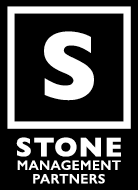
10 Apr One Blue Pen
From Tariffs to Triumph
Achieving Operational Excellence Through Inventory Strategy
In today’s turbulent global economy, businesses face relentless challenges: rising tariffs, supply chain disruptions, and unpredictable market conditions. CEOs and CFOs must act decisively to protect margins, streamline operations, and meet customer demands—all while navigating unrelenting external pressures. To succeed, leaders must embrace strategies that cut through complexity. By sharpening the focus on inventory turnover and applying the Pareto Principle, companies can secure operational efficiency, financial resilience, and a competitive edge in an uncertain world.
Inventory Turns: A Critical Weapon Against Tariff Pressures
Inventory turnover isn’t just a metric, it’s a strategic necessity in combating today’s trade challenges. High inventory turns free up essential capital, reduce holding costs, and strengthen cash flow, providing businesses with the agility to weather tariff-induced volatility.
The urgency for action is clear. Simplifying assortments can help businesses offset the operational burden of tariffs. At a consumer-packaged goods (CPG) company, we confronted inefficiencies with the “One Blue Pen” initiative. Faced with 193 varieties of blue pens and sluggish turnover rates of six per year, we streamlined our selection to 23 options, focusing on customer preferences and efficiency. Within a year, this shift drove turnover to 31, reduced costs, and aligned offerings with market needs. This decisive approach transformed complexity into clarity at a time when external pressures were at their peak.
Cutting Through Complexity: The Customer Imperative
In a sales-driven culture, businesses often overextend their product portfolios to cater to every perceived customer demand. Yet, as Harvard Business Review has shown, an overabundance of choice can overwhelm rather than satisfy customers, eroding their confidence and trust.
Streamlined assortments don’t just ease operational workloads—they simplify the customer experience. Initiatives like “One Blue Pen” demonstrate how businesses can deliver better value by offering focused, accessible product options. In today’s high-pressure market, such strategic focus is essential for balancing customer loyalty with operational efficiency.
The Pareto Principle: Driving Urgent, High-Impact Decisions
The Pareto Principle, or 80/20 rule, is no longer a luxury—it’s a lifeline for modern executives. By identifying the 20% of inventory responsible for 80% of sales, leaders can prioritize critical resources, eliminate waste, and ensure their strategies have the greatest impact.
In action:
- High-impact inventory: Accelerate replenishment, demand forecasting, and visibility for these profit-driving items.
- Low-impact inventory: Apply lean strategies, such as promotions or bundling, to avoid unnecessary capital allocation.
In a climate of escalating trade pressures, this targeted segmentation empowers leaders to cut through the noise and take swift, decisive action where it matters most.
Automation with Purpose: Mitigating Complexity in a Chaotic Market
CFOs face mounting pressure to justify costly automation projects, especially during times of volatility. Inventory management grounded in Pareto principles ensures automation investments are focused and effective. This strategic alignment enables businesses to:
- Automate demand forecasting for high-turnover items.
- Streamline replenishment processes to stabilize supply chains.
- Deploy analytics to quickly address underperforming inventory.
Automation, when applied with precision, transforms operational complexity into strategic advantage. Amid tariff challenges, these investments safeguard ROI and operational stability.
The Call to Action: Seizing Control in an Uncertain World
Global trade challenges demand bold leadership and decisive action. Failing to adapt to tariff-driven pressures leaves businesses vulnerable to inefficiencies, cash flow constraints, and eroding market positions. By streamlining assortments, targeting high-impact inventory, and harnessing automation, companies can cut through uncertainty and emerge stronger.
The “One Blue Pen” initiative demonstrates the transformative power of these strategies, showing how clarity and focus can simplify operations and enhance resilience. For CEOs and CFOs, the time to act is now. Trade pressures won’t wait, and neither should you. Take control, sharpen your strategy, and position your business for success in a marketplace that demands nothing less.


